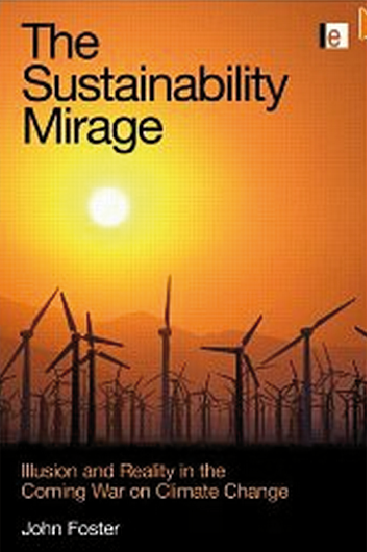Hi Aubrey,
Thanks for this - I'm very happy to support the proposal, please do add my name.
Best wishes,
John
Research Fellow in Philosophy
Department of Politics, Philosophy and Religion
County South (B32)
Lancaster University
Lancaster LA1 4YL, UK
The total framework within which a UK carbon-rationing regime must be established if the goal really is climate victory is pretty simple in outline for all that. It depends in fact on one of those solutions which is so simple that no-one could see it until it was formulated by a non-expert thinking outside the box. This is the framework known as contraction and convergence (C&C), first proposed by a tiny NGO called the Global Commons Institute in 1990. It is probably best explained in the words of Aubrey Meyer, the man behind it: -Global greenhouse emissions need to be reduced by 60 percent in less than a hundred years. When governments agree to be bound by such a target, the diminishing amount of carbon dioxide and other greenhouse gases that the world could release while staying within the target can be calculated for each year of the coming Century. This is the contraction part of the process. The convergence part is that each year’s tranche of the global emissions budget gets shared out among the nations of the world in a way that every country converges on the same allocation per inhabitant by say 2030. Countries unable to manage within their allocation would, within limits, be able to buy the unused parts of the more frugal countries.
This means, startlingly, just what it says. Over time, we converge on an equal share for every human being of the carbon dioxide and other greenhouse gases which it is judged safe for humanity as a whole to go on emitting. The global percentage reduction target and the date for reaching it are decided on the basis of our best scientifically informed estimate of what will give us the best chance of keeping now-inevitable global warming within survivable limits. We then work towards meeting that target on the understanding that well before we do so, every country will be operating within an equitable national emissions allocation. This allocation will be equitable because it will depend only on national population, multiplied by the personal carbon budget on which we shall have converged for each global citizen. As within the suggested UK rationing scheme, trading around these national allocations is permissible, but the overall global emissions quota is firmly capped.
A standard reaction among people encountering these proposals for the first time is to say, 'How hopelessly idealistic!' And such incredulity is perfectly understandable at first blush. Genuinely equal shares worldwide in a key resource equality not just in theory (high-sounding declarations of universal human rights and so forth), but in hard practice, to which the hitherto globally rich and dominant must conform themselves - and to a fixed timescale! Whose leg does he think he's pulling?
But this response will not survive much careful reflection. For what, actually is the alternative? We have to turn the global-warming super-tanker around, if not quite on a sixpence then certainly within a very limited stretch of sea - and its currently lumbering momentum is powered increasingly by the burgeoning carbon emissions of hugely populous and ambitiously industrializing developing countries. Any chance which a C&C framework offers for halting this process will be greater than the chance of halting it within a global regime where the already developed nations continue trying to defend their own turf, their own historic claims to far more than their fair share of the planet's absorptive and regenerative capacities, because that chance is simply no chance. Whatever may have been the pros and cons. from all the possible perspectives of real international equity in the past, the case for it now is irresistibly and urgently practical. It is with the climate war as Benjamin Franklin famously reminded the Continental Congress preparing to sign the US Declaration of Independence: we must hang together, or we shall assuredly hang separately. That is now the hard unvarnished truth for global humanity.
No doubt it explains why endorsement for the principle, at any rate, of C&C has in fact been forthcoming from a good many quarters where one would expect brisk intolerance of mere hopeless idealism. These include the World Bank, the European Parliament and the UK Royal Commission on Environmental Pollution. The UN's Intergovernmental Panel on Climate Change has explicitly recognized the logic, and tile World Council of Churches has called for commitment to the framework. It would require impossibly high standards to regard all these bodies as lacking in seriousness. Together, the weight or their testimony, suggests that it is may be dismissing C&C as impracticable which is actually the unrealistic option.
What all this means for a country like Britain is that we must act, at last, to redress the historic balance, not through windy 'apologies' for this or that colonial atrocity, nor just through a much more generous development aid budget, but through making the break in this critical arena. That means setting ourselves a reducing carbon ration within assumptions compatible with global convergence and then offering decisive leadership in the international process which will be required for choreographing the actual introduction of the C&C framework worldwide. This a very demanding kind of engagement when compared with our current stance, but it is no less than a survival imperative. There is still a huge job to be done in campaigning and preparing for C&C, never mind in implementing it. The question for this book and this chapter, however is how all this relates to a deep-sustainability understanding of what we are about.
The Sustainability Mirage: Illusion and Reality in the Coming War on Climate Change
John Foster
C&C endorsements in a range of Academic Publications
Why not Follow @aubreygci
Why not
Tweet this?


